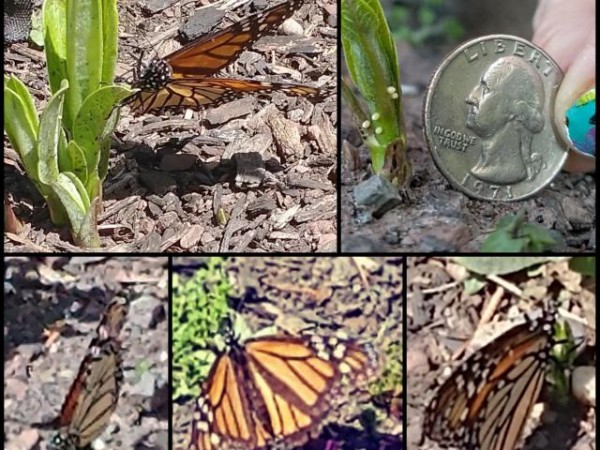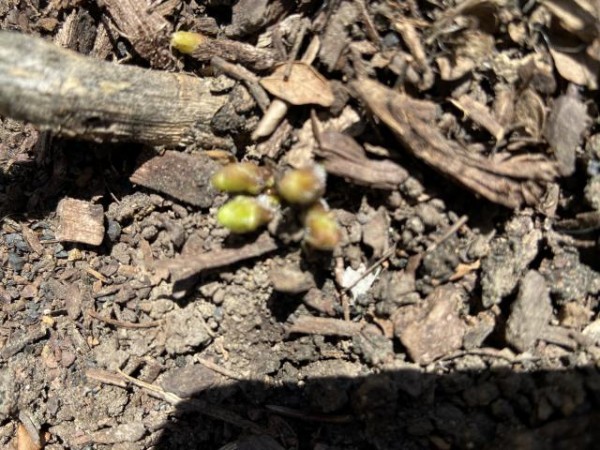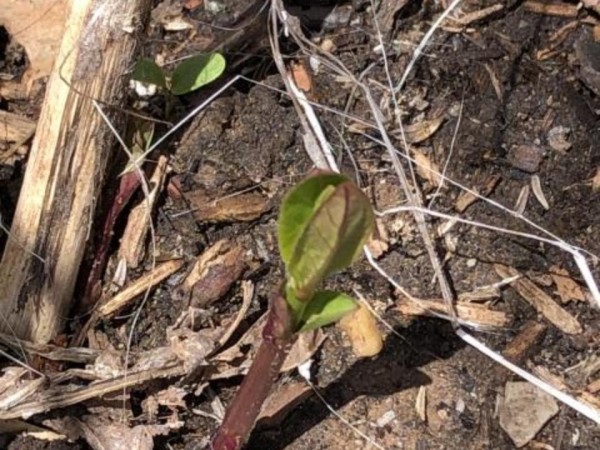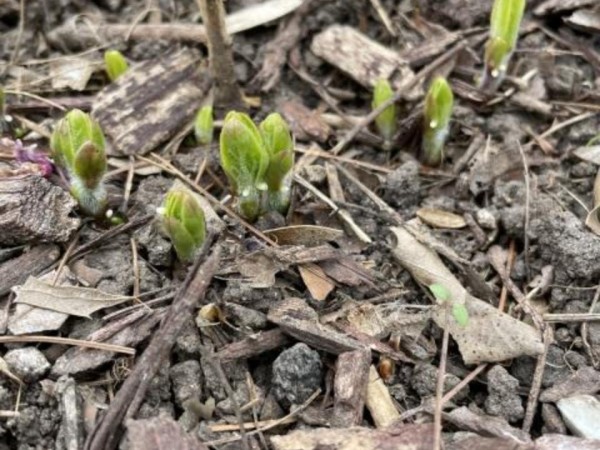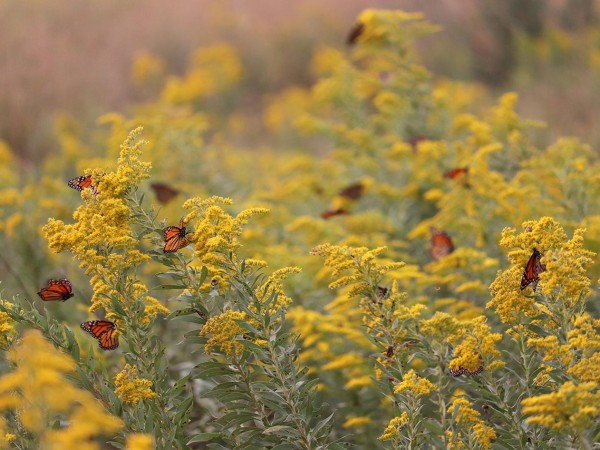Eastern Monarch Spring 2022 Report #4
Published: 04/20/2022
End of a Generation
The monarchs of the overwintering generation have only a few weeks left to live. The worn-winged butterflies are no longer their brilliant orange. Most monarchs from this generation will die by the first of May. At this time of the migration season, Journey North volunteers are observing multiple generations of monarchs.
Migrating Monarchs
In the Midwest and Great Plains, the leading edge of migration is hovering around latitude 36-38°N. Farther east in the mid-Atlantic region, monarchs are moving slightly quicker as the leading edge is around 39-40°N. Migration can be a stop-and-go journey with wind and weather in control. Check out the monarch migration map to compare the migration frontline from week-to-week.
Kim in Charlotte, NC: "6.55pm - fluttering around, laying eggs EVERYWHERE. Abdomen very swollen, wings faded." (04/13/2022)
Judy in Newport News, VA: "Monarch Waystation #271 reports first monarch butterfly, female, sighted laying eggs on purple milkweeds in the front bed starting about 3:50 pm as I began taking photos of spring blooms. The butterfly's scales were a bit faded, some edges of her wings were torn or missing, but otherwise she was a strong flyer and enthusiastic egg layer. Temps were in the high 60s, sunny, breezy. Welcome back monarch, sowing early Easter eggs, on Good Friday!" (04/15/2022)
Laura in Tulsa, OK: "Lone female - weathered and tattered so assume a re-migrant. She was flying low from sprig to spring - almost frantically - looking for milkweed. I have some up, which she unfortunatey did not find." (04/15/2022)
Kelyn in Schwenksville, PA: "This muted color monarch momma dropped over 100 eggs on my milkweed sproutlings today. I almost couldn't believe my eyes! I have never seen one this early in the season." (04/15/2022)
Michael in Pretty Prairie, KS: "About mid-afternoon, we saw a well-worn & faded adult monarch feeding on the dandelions, etc in our yard." (04/16/2022)
Milkweed Emergence
Milkweed emergence is still behind last year's pace. This can likely be attributed to the winter-like start to spring gripping much of North America. At this same time last year, milkweed was as far north as latitude 46°N. So far this year, the northernmost report is from latitude 41°N.
Frank in Itasca, IL: "Butterfly weed (Tuberosa) first of the season finally popping up." (04/16/2022)
Friends of Watsessing Park in Bloomfield, NJ: "Swamp milkweed is up. Kind of cold but it’s surviving!" (04/17/2022)
Eggs and Larvae
Female monarchs are in urgent pursuit of milkweed to lay eggs. As spring progresses and more milkweed emerges, reports of eggs and larvae will increase as well.
Denise in Pittsburg, KS: "[Monarch eggs] on butterfly weed, common, and swamp milkweed sprouts. Very cool here in the 50’s. Observed only one butterfly yesterday. Monarch Station 7005." (04/15/2022)
Connie in Bixby, OK: "Two first instars on common milkweed." (04/18/2022)



